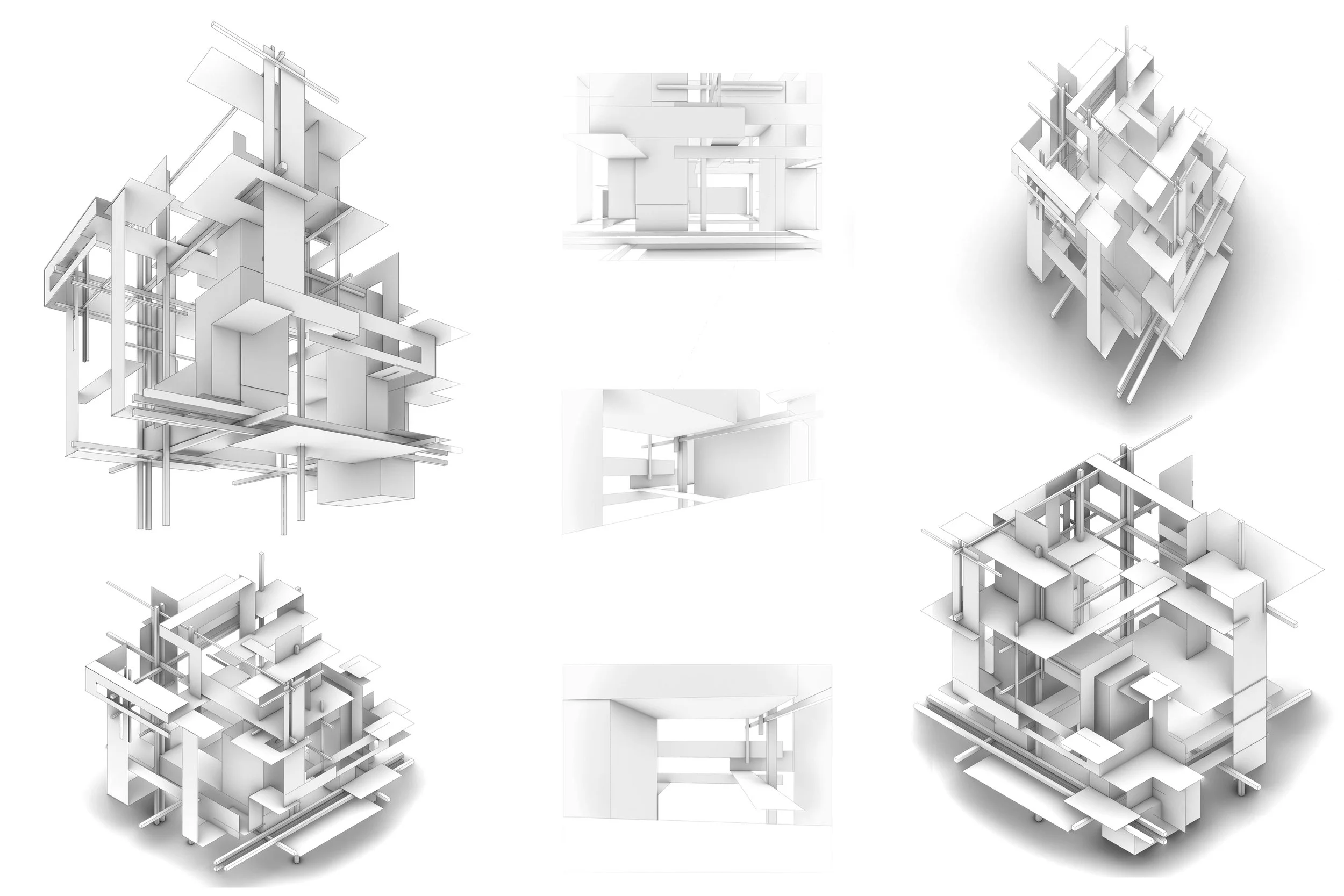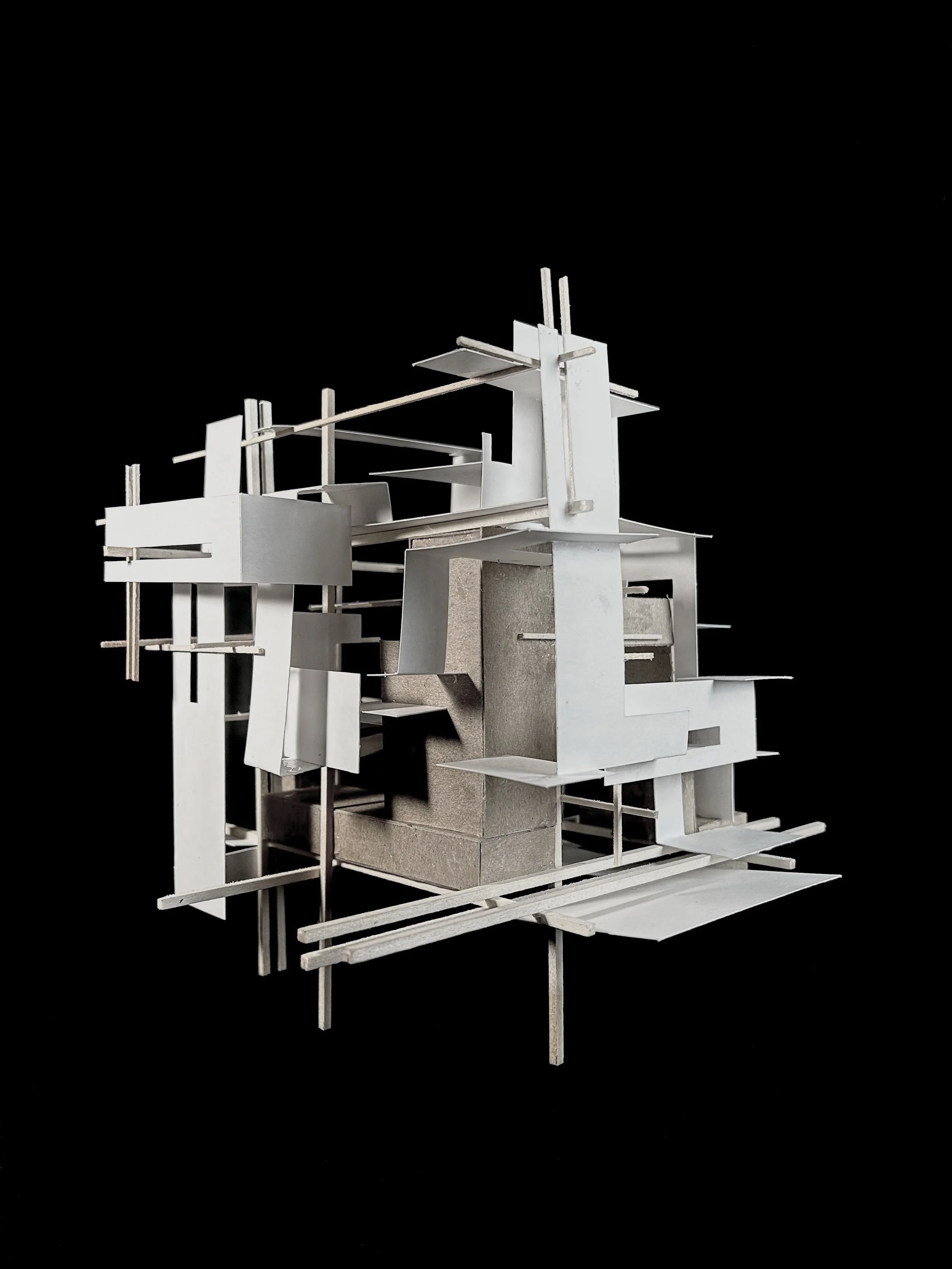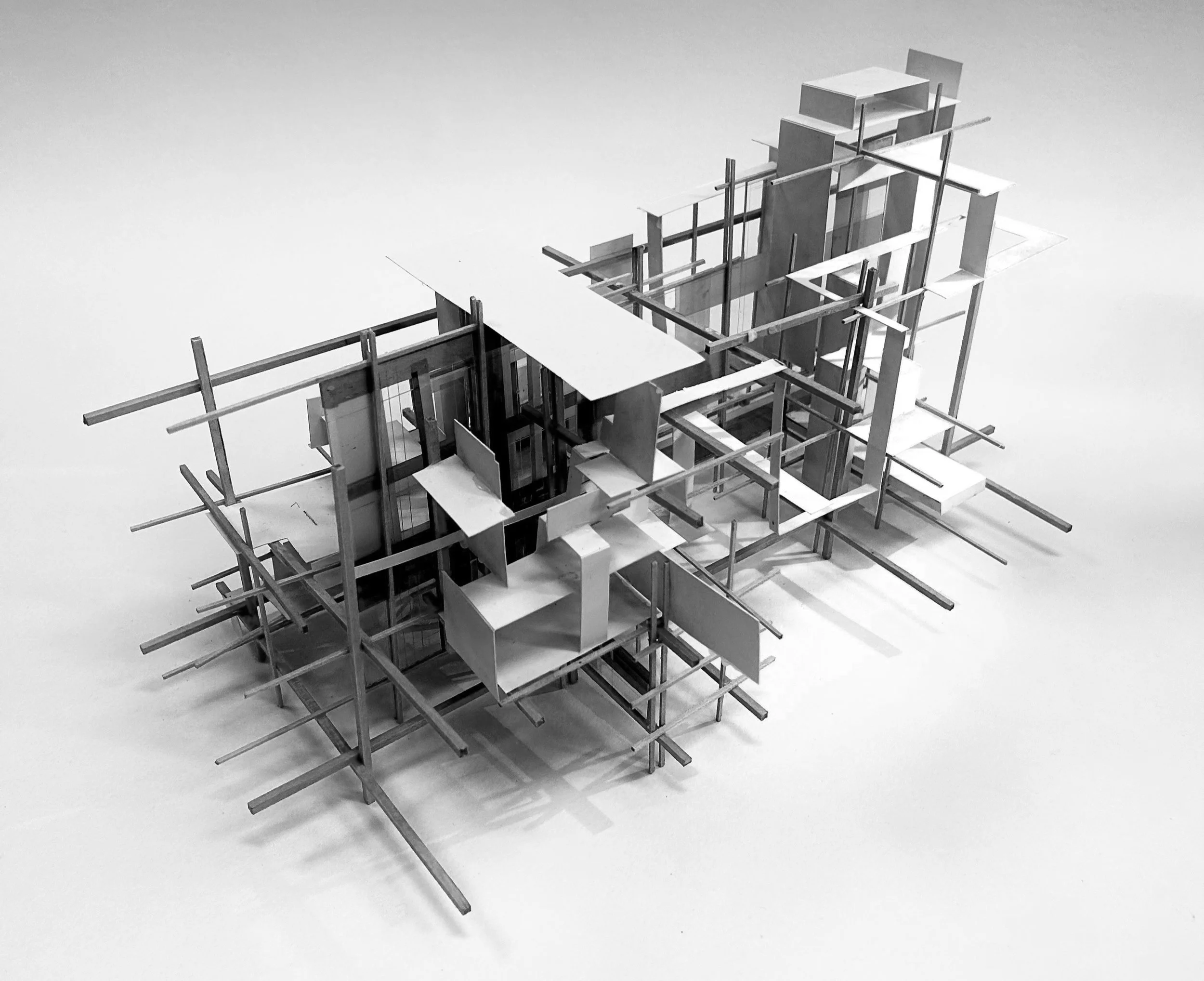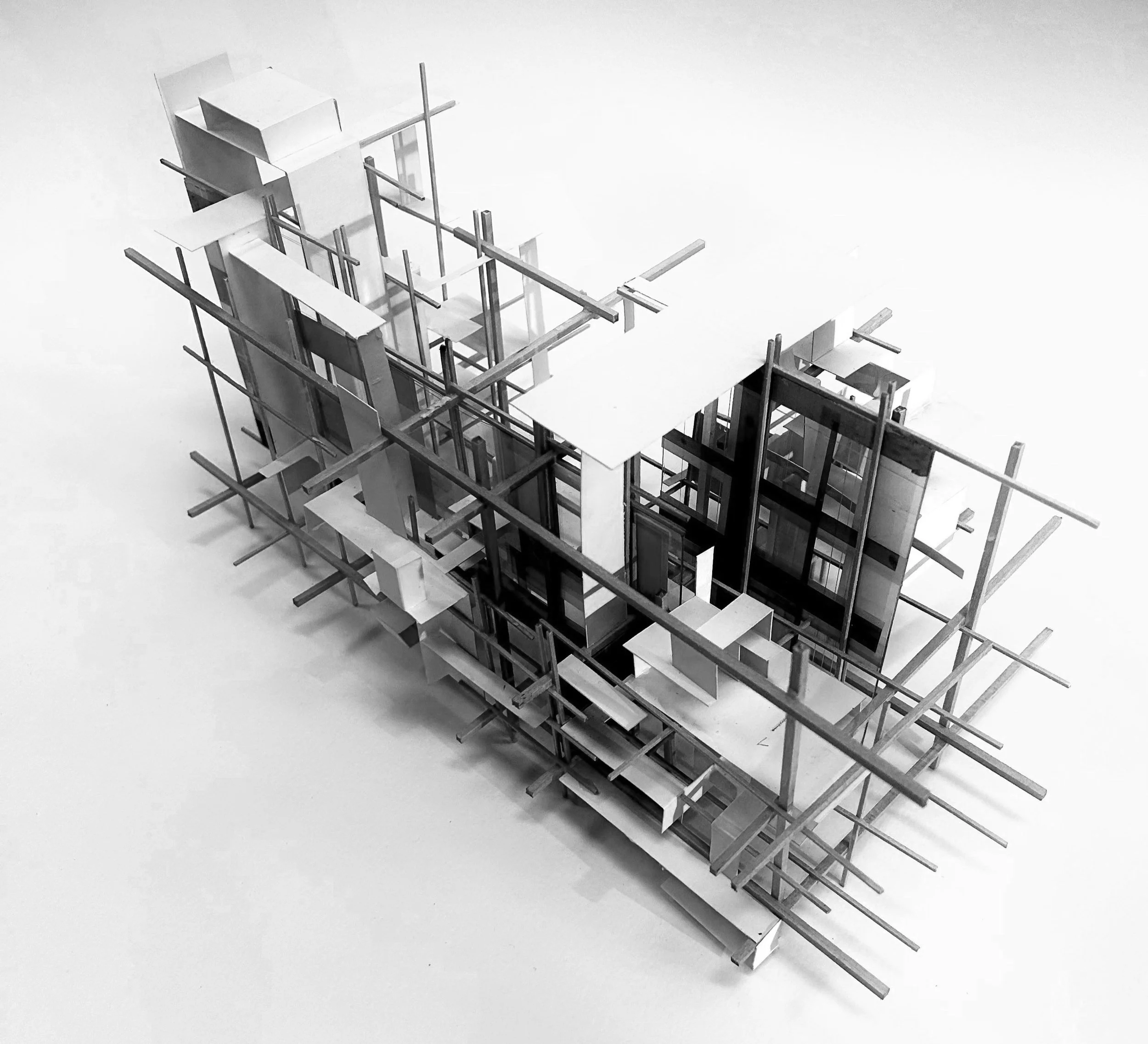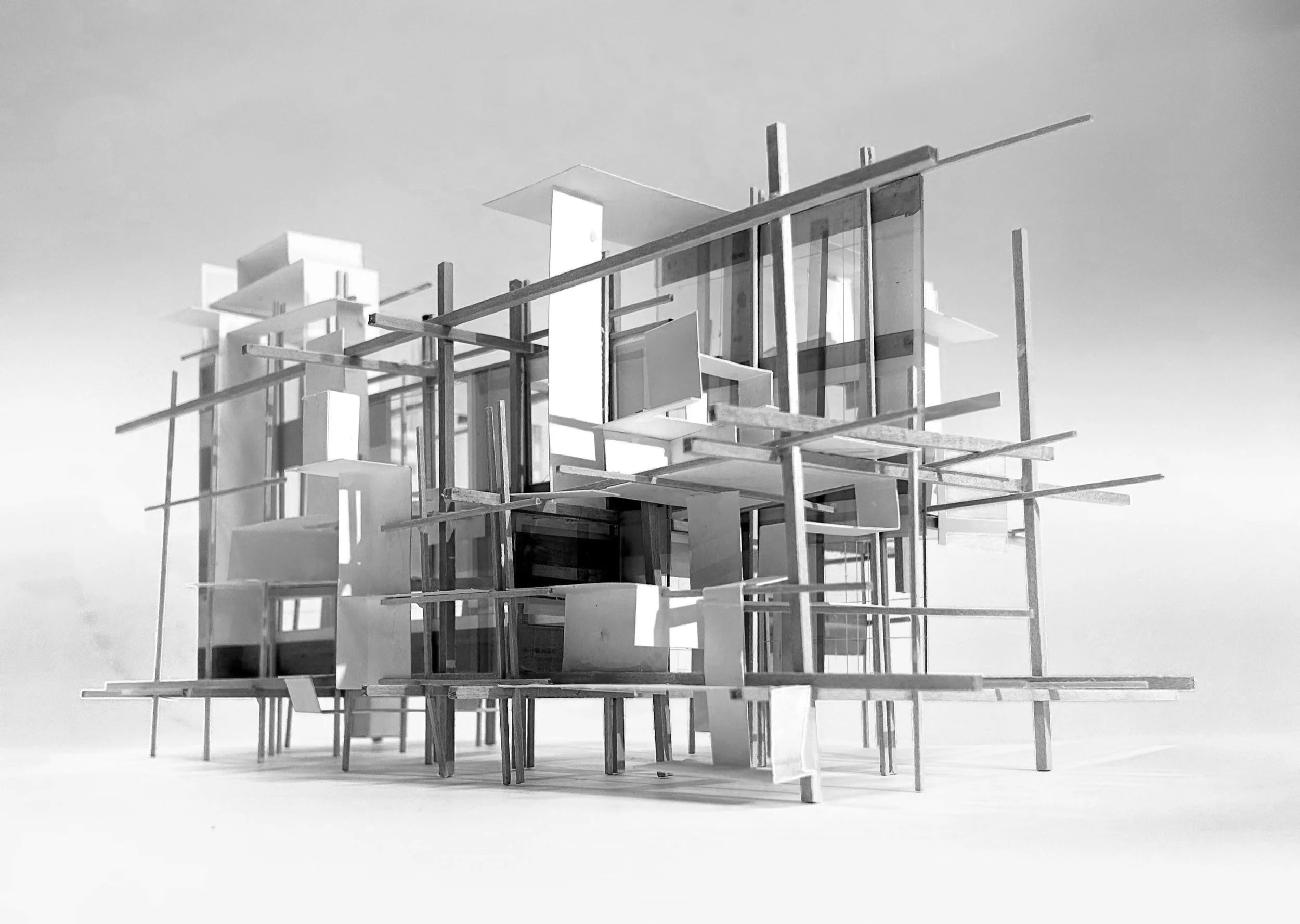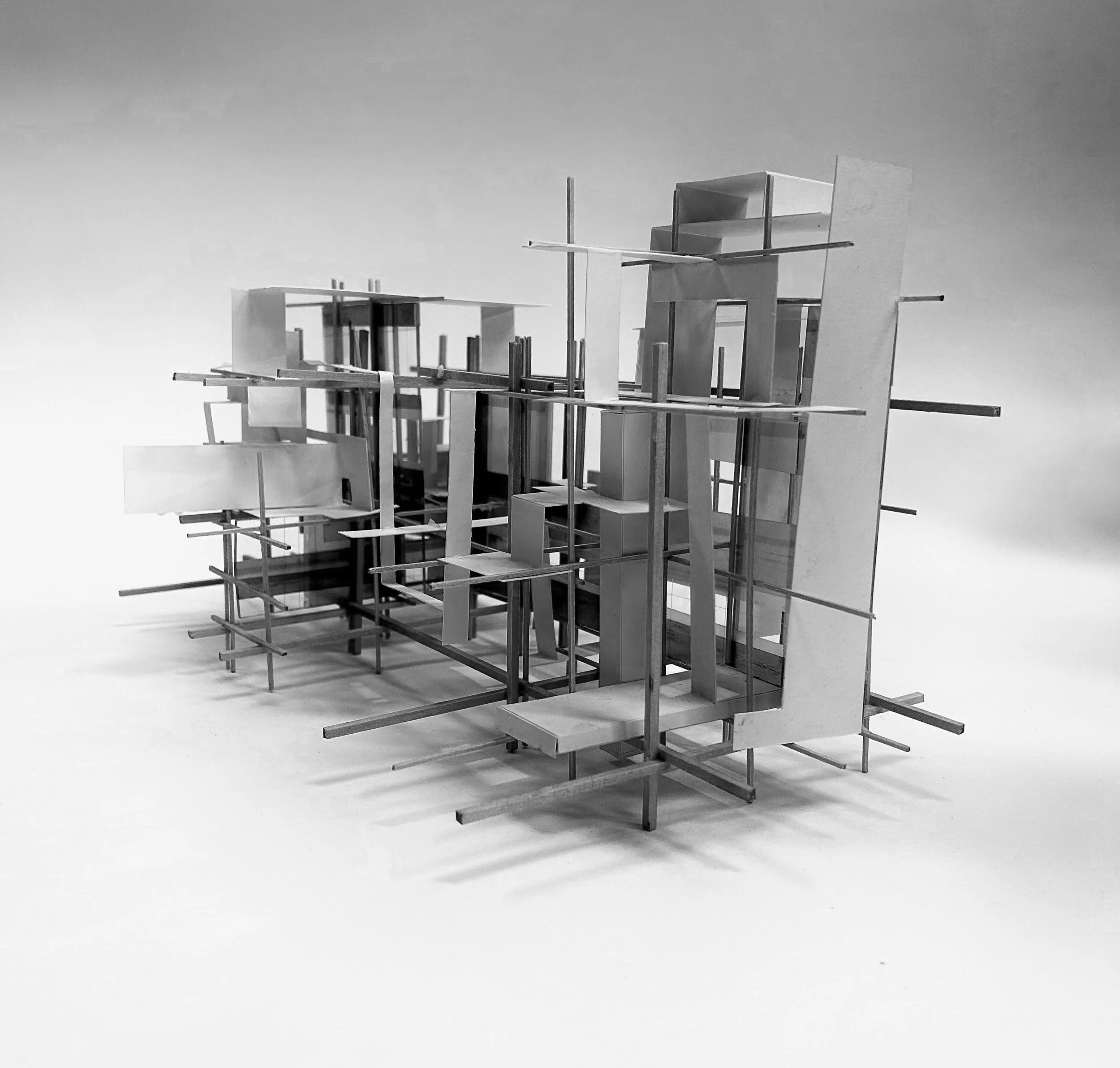CUBE
CUBE
The Cube’s itinerary focused on circulation paths and the way in which spaces interact with movement. Within this project, the primary focus became the use of the space based on the classification of being either a place of rest, or a place of movement.
We were asked to select two characters; I selected an archaeologist and a trapeze artist based on the vertical and horizontal capacities and juxtaposition. There was a growth pattern from one corner to the other, seeming to increase in height and density.
We used a narrative to define our organization of space and interaction between our two characters. The archaeologist and trapeze artist are a father and son duo, the archaeologist being stuck in the past and expecting his son to follow in his footsteps. However the trapeze artists seeks other work, straining their relationship
The Cube project was a form-focused spatial endeavor. Utilizing ideas of implied space, hierarchy, and movement Cube became a more abstract evaluation of the way in which space interacts with itself.
Throughout the project, ideas of anti-space and negative space were relevant, particularly when we began including volumetrics as they were not 2-D installations and thus took up a larger area within the model.
Cube was also intended to reaffirm the juxtaposition between smaller details and a big move. It was expected to utilize large pieces to create small spaces and vice versa while simultaneously making the intended move very clear.
Throughout the project, we increased scale, complexity, materials, and time. While we initially started with a 3-inch model, it later evolved into a 9-inch model. This process allowed me to maintain spaces created on a smaller scale within a larger project, better defining hierarchy.
The CUBE was also a study on light, and the way in which form can influence shadow in a way that contributes to the projects overall meaning. Throughout the project, I was conscious of how shadow could help to define spaces and make adjacent spaces feel further away.


